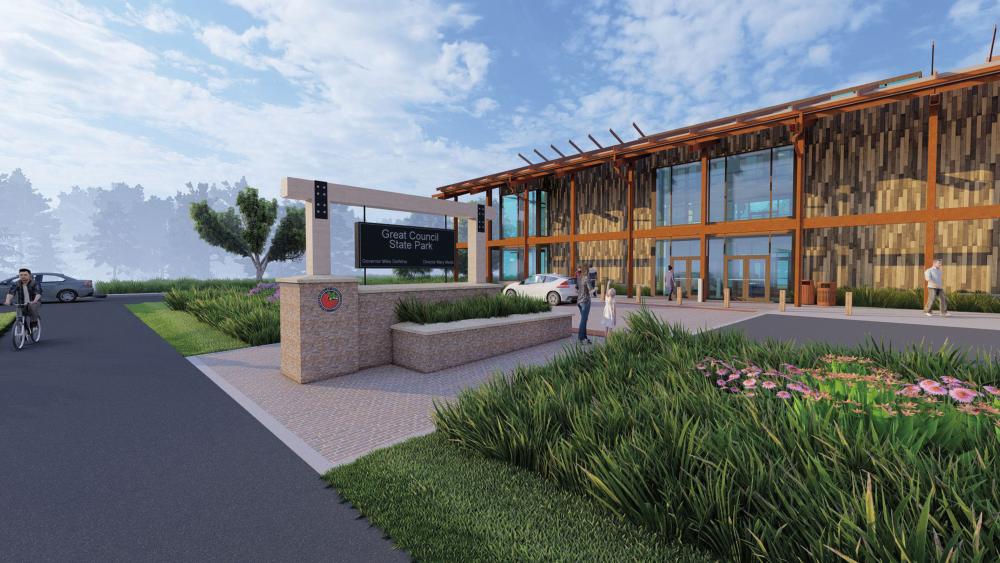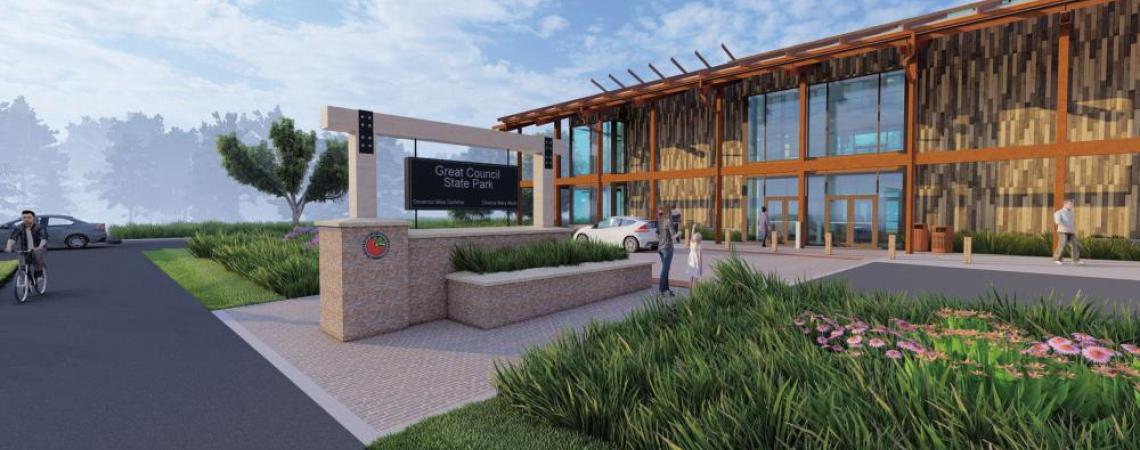The last organized departure of Shawnee people from Ohio began in September 1832. Pushed from their homes by the 1830 Indian Removal Act — about two decades after the death of their celebrated leader, Tecumseh — the last band of the once-powerful nation began a difficult journey to Indian Country, now known as Oklahoma.
It’s been nearly two centuries since that sorrowful exodus from Lewistown, but the Shawnee have not forgotten their roots, says Glenna Wallace, chief of the Eastern Shawnee Tribe, based near Wyandotte, Oklahoma.
“Ohio will always be our homeland,” Wallace says. “That’s where our ancestors were, where our ancestors died.”
Great Council State Park is scheduled to open near Xenia early this year.
Telling the story of the Shawnee — and their relationship with Ohio settlers — is the motivation behind the creation of Great Council State Park, scheduled to open early this year on State Route 68 between Xenia and Yellow Springs.
Wallace, who has tangled with state officials on other issues, praises ODNR and the Ohio History Connection for the efforts to accurately present the Shawnee story in the new park. “I’ve always told them, ‘Don’t talk about us, talk with us,’ and that has happened from day one with this project,” she says.
Ohio Gov. Mike DeWine, who hails from that part of Ohio, chose the name to reflect a collaborative way of presenting history. “Growing up near Oldtown, I have always been captivated by the area’s Shawnee and pioneer past,” he said. “Great Council State Park will ensure this fascinating history will continue to be passed down to future generations.”
Talon Silverhorn, naturalist supervisor of the Ohio Department of Natural Resources Division of Parks and Watercraft, says the park will help preserve the legacy of the Shawnee and also remember the people of European descent who settled in Greene County.
“Great Council represents the reuniting of the people and communities and histories that have been separated for many years,” says Silverhorn, a citizen of the Eastern Shawnee who grew up on the Oklahoma reservation.
ODNR broke ground in May 2022 at the site of historic Oldtown, a village at the center of Shawnee culture in the late 18th century. Visitors may be surprised to find that the property covers just over 14 acres.
The park’s three-story, 12,000-square-foot interpretive center, described as a modern take on the Shawnee council house, features a mix of human and natural history.
The main floor features a “living stream,” a theater, and a gift shop, while the second floor is dedicated to the history of the Shawnee people — from pre-settlement days, when they roamed widely over the eastern continent, to modern life in Oklahoma.
The lower level meets museum-grade curation standards, including strict environmental and security controls, to house specialized exhibits, displays, and artifacts. The inaugural exhibit features a series of photos from the three federally recognized Shawnee tribes, all now located in Oklahoma and all of whom were consulted in developing the center.
Although modest in size and heavy on history, the new state park incorporates plenty of nature, says Mary Mertz, ODNR’s director.
Along with the living stream in the council house, the park includes a short walking trail through a native prairie restoration with a connection to the Little Miami River through land owned by the Little Miami Conservancy.
“We envision people watching the movie, checking out the aquatic species in the stream, learning about the history, and then walking down to the river,” Mertz says. “We hope to see families, school groups, Scouts, and all people use this space to learn more about the tribes who used to call this part of Ohio home.”










